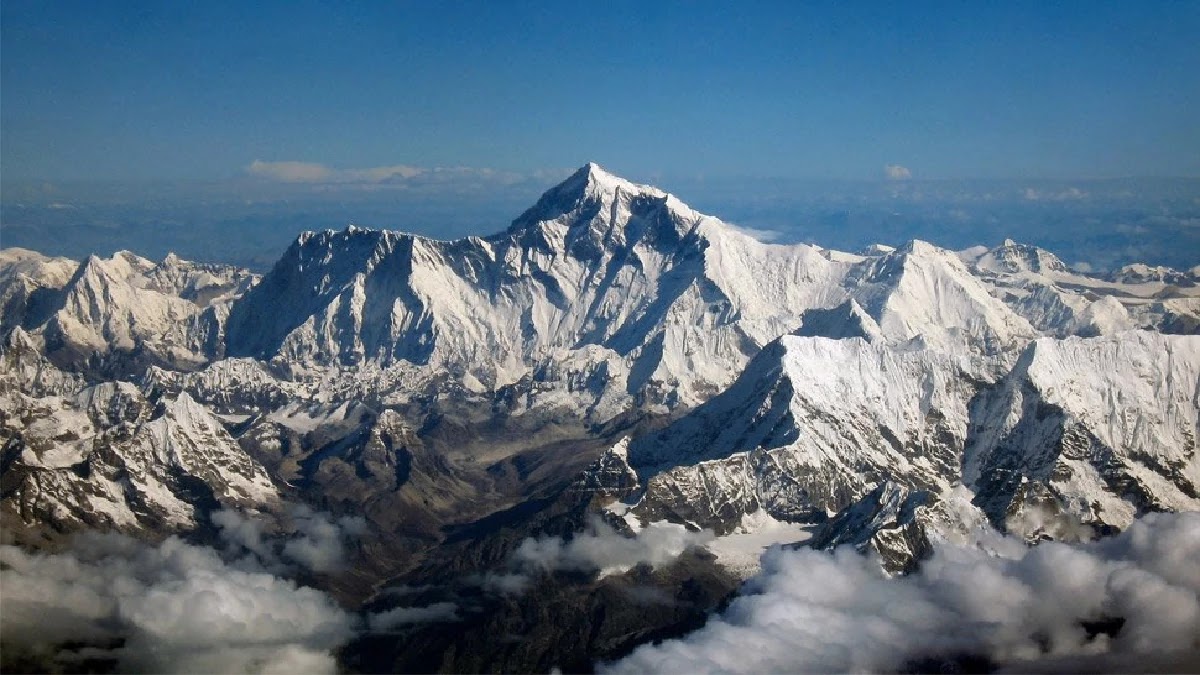
Atmospheric pollution levels have plummeted worldwide due to coronavirus, and the lockdowns implemented in several countries around the globe.
In India, the second-most populous country in the world, pollution has dropped there as well. In fact, it is characteristic that for the first time in 30 years, someone from India can see the top of the Himalayas. The Jalalandar area of Punjab is about 200 kilometers from the Himalayas. Until recently, the gray cloud over the area did not allow anyone to reach the top of the Himalayas. However, during these days, when the movement of vehicles and the operation of factories have been reduced to a minimum, the atmosphere has cleared, and the residents have the opportunity to admire the Himalayas from afar.
The lockdown was implemented in India on March 22, in an effort to control and minimize the spread of the novel coronavirus and has contributed to a notable reduction of air pollution.
For numerous citizens, the view of the Dhauladhar Range—which in English means "White Range" and is part of the Himalayas—is something which they have never witnessed in their entire lives, according to SBS.
Photos of this had spread throughout the world via social media. The former Indian cricket player Harbhajan Singh commented:
"Never seen Dhauladar range from my home rooftop in Jalandhar. Never could imagine that's possible. A clear indication of the impact the pollution has done by us to mother earth."
Never seen Dhauladar range from my home rooftop in Jalandhar..never could imagine that’s possible..clear indication of the impact the pollution has done by us to Mother Earth 🌍.. this is the view pic.twitter.com/laRzP8QsZ9
— Harbhajan Turbanator (@harbhajan_singh) April 3, 2020
Meanwhile, anti-pollution activist Sant Balbir Singh Seeechewal reported in SBS:
"We can see the snow-covered mountains clearly from our roofs. And not just that, stars are visible at night. I have never seen anything like this in recent times."
India has a population of 1.3 billion people, and last year had the world's most polluted cities. The lockdown that it's going to last, at least, up to April 14, has provoked reaction coming from rights groups as well as figures from private industry who declare that the measure is erratic and could and damage the country and its economy.
On Tuesday, the Economic Times broadcasted an opinion piece by auto company executive Rajiv Bajaj claiming that "virtually no country has imposed such a sweeping lockdown as India has; I continue to believe this makes India weak rather than stronger in combating the epidemic."
Nonetheless, the government's decision to shut down not only factories, marketplaces, and shops but also temples and reduce public transportation had an environmental benefit not only for India but for the whole world. The high pollution levels that, among other things, India is famous for had dropped significantly.
From my home town in Punjab.... we had never seen mountains 😊😊 pic.twitter.com/RhRrt9jyxB
— Arun Arora (@Arun2981) April 5, 2020
Seechewal explained:
"Not just normal traffic is off the roads, but the most industry is also shut down. This has helped bring the pollution level to unbelievably low levels."
As reported by CNN, governmental data demonstrate a descent of 71% of the harmful microscopic particulate matter known as PM 2.5 in the Indian capital New Delhi. PM 2.5 affects the lungs and is transmitted with the blood to other vital organs, causing numerous dangers to people's health.
Meanwhile, nitrogen dioxide emitted to the air by motor traffic, and power plants have also fallen by 71% from 52% per cubic meter to 15% during the same period.
Similar drops in air pollution have been recorded in major cities like Bangalore, Chennai, Kolkata, and Mumbai.
Today's best news should be that Dhauladar Range,Himachal Pradesh, Himalayas have started to be visible from Jalandhar ( approximately 300 Kms). This has never happened in our lifetime. Loving Views...... pic.twitter.com/D8IBeC4cao
— Shailen Pratap शैलेन्द्र 🇮🇳 (@shailen_pratap) April 4, 2020
Jyoti Pande Lavakare, the co-founder of Indian environmental organization Care for Air, informed the network:
"I have not seen such blue skies in Delhi for the past ten years …It is a silver lining in terms of this awful crisis that we can step outside and breathe."
India is hardly alone in experiencing a significant amelioration of air quality in association with government lockdowns meant to constrain the expansion of the pandemic.
From China to Europe(Italy, Spain, etc.) and even the notoriously smoggy Los Angeles, lockdowns have to lead to analogous drops in nitrogen dioxide concentrations.
The severe drop in air pollution enchants Seechewal. He commented:
"I had never imagined I would experience such a clean world around me. The unimaginable has happened. It shows nothing is impossible. We must work together to keep it like that."
Photo credits to: Steve Hicks, Flickr












COMMENTS